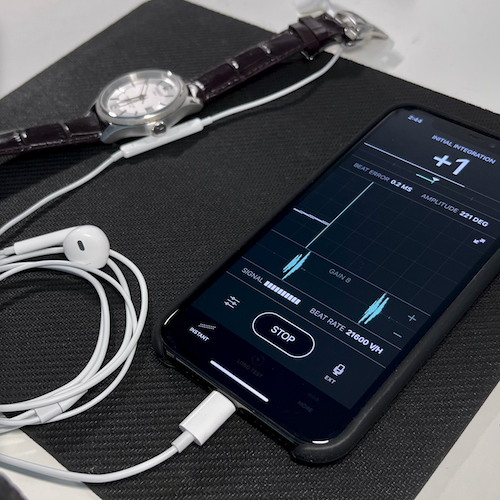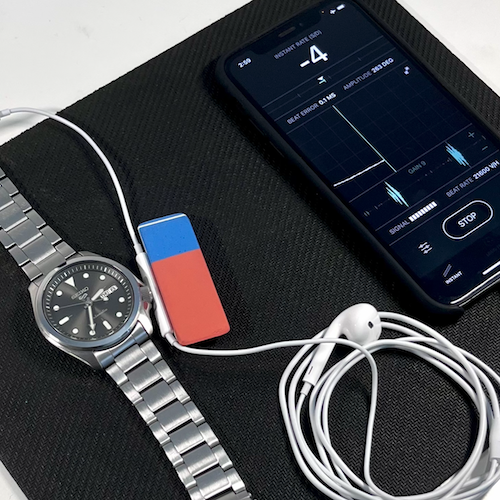

Timegrapher X analyzes the ticking sound of a mechanical watch to measure its accuracy rate, beat error, and amplitude. The app is specifically optimized to work with the Apple EarPods' headset microphone. The results are directly dependent on the quality of the signal provided.
Ambient noise can affect the quality of the signal and decrease the level of detail. This is especially true for high-pitched sounds such as running water, the rustling of leaves, rain, birds, insects, etc.
At the end of the power reserve, the ticking sound can be very quiet and hard to capture. Accuracy and amplitude would typically decrease as the mainspring unwinds, so it is always better to perform measurements at full power.
Ideally, the headset microphone and the watch crown should be slightly pressed together, as
this greatly improves the level of detail and diagram quality. The better the contact, the stronger the
signal. See below for some arrangement ideas:
(click/tap to zoom)
You can use everyday objects to provide the best possible contact. A non-slippery mouse pad and a rubber eraser can be of great help!
Different arrangements may work for different watches and/or positions. Observe the diagram and waveform displays to determine what works best:
A strong signal provides a clean diagram trace, as well as beat error and amplitude readouts. A very weak signal may be used only for rate estimates. [ see: Levels of Detail ]
If the watch case is open, simply place the microphone over the movement for the highest possible level of detail. A rubber band may be used to test the watch in different positions on a traditional timegrapher microphone stand.
With the mic this close, the app may capture extra movement noises, in which case you may need to decrease the gain level and/or slightly alter the microphone's position.